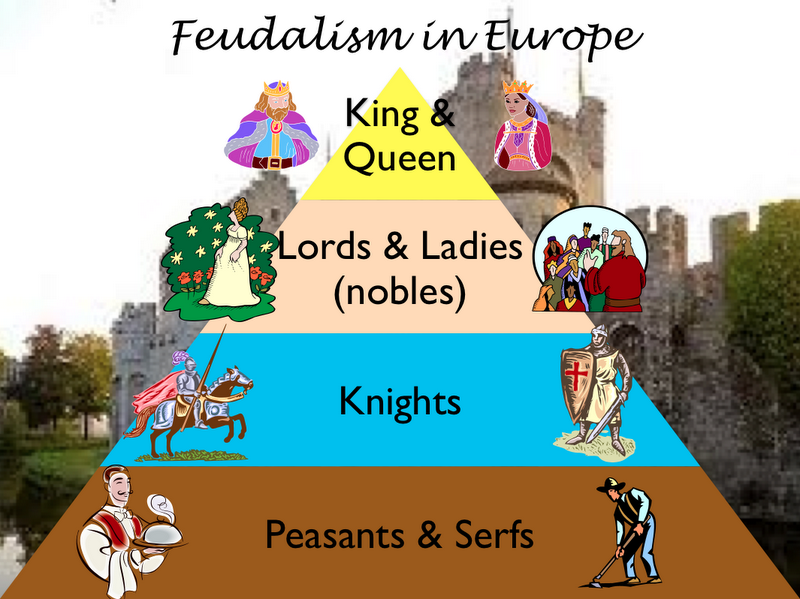The feudal system was a way people in the Middle Ages organized their society, economy, and politics. It worked like a chain of promises between different groups, from the king at the top to peasants at the bottom. This system lasted for hundreds of years and shaped life in medieval Europe.
Where the Feudal System Came From
After the Roman Empire collapsed, there was no strong central government in Europe. Many areas were attacked by Vikings, Magyars, and other groups. People needed protection. Local rulers gave land to warriors in exchange for loyalty and military service. This arrangement slowly turned into the feudal system.
How the Feudal System Was Built
The feudal system was like a ladder of power:
- King – Owned all the land in the kingdom and gave parts of it to lords.
- Lords – Powerful landowners who managed large areas called fiefs.
- Knights – Warriors who protected the land and served their lords.
- Peasants and Serfs – Worked on the land, growing food for everyone.
Each level depended on the one above and below. The king needed soldiers, lords needed workers, and peasants needed protection.
Land Was Power
In the feudal system, land was the most valuable thing. If you owned land, you had wealth and control. Lords gave pieces of their land to knights so they could live and work there. In return, knights promised to fight for them when needed.
Peasants worked the land to grow food, and part of their crops went to the lord as rent. The more land you had, the more power you held.
Promises and Oaths
Relationships in the feudal system were based on promises. A knight or lord would swear loyalty to the person above them in a special ceremony. This promise, called an oath of fealty, was taken very seriously. Breaking it could mean losing land or honor.
The Role of the Church
The Church was very powerful in medieval times and owned a lot of land. Bishops and abbots (leaders of monasteries) acted like lords, collecting taxes and managing farms. The Church also said kings ruled by God’s will, which made people more likely to accept the feudal order.
Life for Peasants and Serfs
Most people in the feudal system were peasants. Some were free, but many were serfs. Serfs were tied to the land—they could not leave without the lord’s permission. In return, they got protection and a place to live, but their lives were hard and full of work.
Good and Bad Sides
The feudal system brought some order to a dangerous time. It made sure there were soldiers to protect people and land to feed them. But it was also unfair, with most people having little chance to improve their lives.
Why the Feudal System Ended
Over time, trade grew, cities developed, and kings got stronger armies that didn’t depend on lords. Events like the Black Death killed many workers, which gave peasants more bargaining power. Slowly, the old system broke down and new ways of government took over.
Lasting Effects
Even though the feudal system ended long ago, it shaped Europe’s history. Many castles, traditions, and even some land laws today come from this time.
Conclusion
The feudal system was a network of promises, land, and loyalty that kept medieval society running. It gave people protection but also locked them into strict roles. By understanding it, we can see how power, responsibility, and community worked in the past—and how much things have changed.
FAQs
1. What was the feudal system?
A medieval system where land was exchanged for loyalty and service.
2. Who was at the top?
The king, who owned all the land.
3. What did knights do?
They fought to protect their lord’s land.
4. Were peasants free?
Some were, but many were serfs tied to the land.
5. Why did it end?
Trade, stronger kings, and social changes made it unnecessary.
Read Also : Caddo Lake Explained: A Natural Wonder of the South

